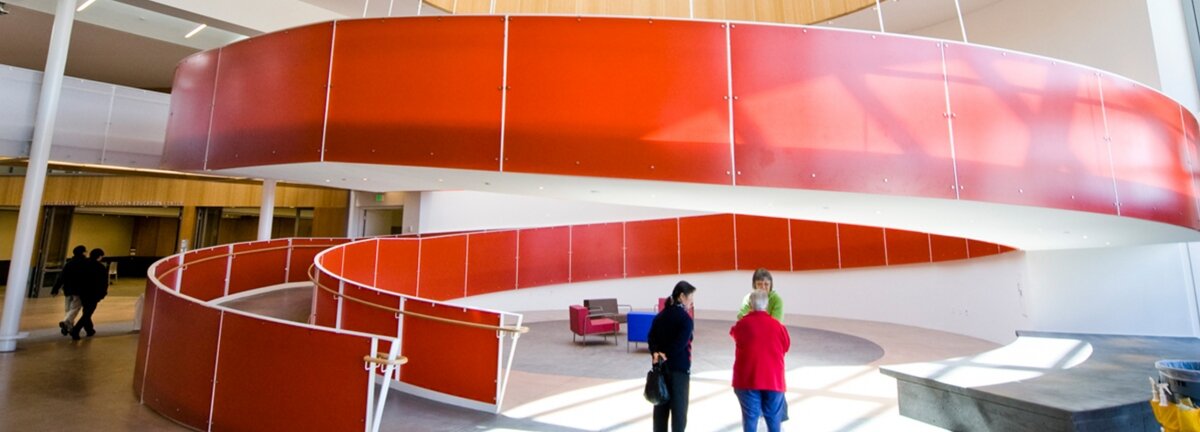Disability and ability: towards a new understanding

We need architectural theory, history and criticism that engages with disability as more than just a problem for designers to solve.
The social aspects of architecture and community-based collaborative design are what I am interested in. This is about understanding the relationships between people and space, as well as how to design better spaces. I believe that where abled people often fail to notice the work involved in physically negotiating the space around them, disabled people are experts at it.
Disability forces a heightened sense of awareness of the surrounding space upon a person. By engaging with these diverse experiences, I believe we can learn to challenge the assumptions that underpin contemporary architecture - and to develop a new kind of practice. This is reflected in the kind of work of which I am involved. It doesn't seek to replace contemporary architectural education, but to challenge it. To provide discussion and an understanding of how different bodies are treated in the space around us. Here are some examples that show why we need architectural criticism that explores disability as more than just a functional problem.
Inclusive design is not just about problem-solving. It's about unravelling the ambiguous relationship between disability and ability for designers.
Attitudes about disability are embedded in society. Tobin Siebers gives a lovely example in his book Disability Theory. The Appalachian Mountain Club had built a new mountain lodge in New Hampshire, which had to comply with the American Disability Act. The changes required were late design changes and therefore expensive. Members of the club and the media were aghast and questioned why the lodge should be made accessible when the likelihood of anyone who was disabled using it was unlikely.
When a group of disabled climbers did in fact use the hut – rolling up the expensive wheelchair ramps after a twelve hour hike up the mountain, a local reporter on site asked why they weren't willing to deal with a step if they could haul themselves all the way up the mountain. The party leader commented: ‘In that case, why bother with a door? Why couldn't able bodied people just haul themselves through the window?’ Her comment illustrated the fact that technologies that reduce the load on the able-bodied are regarded as natural extensions of the design, but "the moment that individuals are marked as disabled or diseased … the technologies designed to make their life easier are viewed as expensive additions, unnecessary accommodations, and a burden on society.”
Technologies that reduce the load on the able-bodied are regarded as natural extensions of the design...
Similar assumptions were uncovered in an Architecture-InsideOut workshop – an Arts Council project bringing together architects with disabled and deaf artists - when a group assigned themselves a Changing Places toilet at the Tate Modern. This particular toilet was state of the art, with modern winches and plenty of room. But to the architects’ surprise the artists hated it. Despite its adherence to accessibility, the toilet looked like a mini hospital. The design aesthetic of the Tate Modern literally stopped at the door, to be replaced by a clinical language that was completely out of place with the rest of the environment. In reaction to this the group transformed the space into a kind of miniature baroque palace.
Their experience demonstrated that inclusive design is not just about problem-solving. It is about unravelling the ambiguous relationships between disability and ability for designers. The fact is there aren’t universal design solutions out there. The diversity of human needs is beautifully messy and no solution will ever suit everyone. Take, for example, the tactile studs on pavements for the blind and partially-sighted, for which the RNIB successfully campaigned. One of the biggest causes of blindness is diabetes, which can also reduce sensation in your feet, rendering the studs somewhat redundant. And that's before you even consider the effect that those studs have on a wheelchair user, or just a parent with a pram. Creatively engaging with contradictory situations like this is at the heart of what designers already do. It doesn’t need to be an afterthought brought on by regulations.
Disability can be a way into understanding how different bodies use the space around us. We urgently need architectural education, theory, and criticism that explores the relationships between the design of a building design and its use. We need to believe that built environment students, educators and professionals can have more than just a vague commitment to social responsibility, and that they can translate it into their designs and practice. Improving our understanding of disability and ability is an important step in helping us to take notice and develop approaches to the diverse ways we inhabit the material world.
For reference:
Doing Disability Differently: an alternative architectural handbook on dis/ability, architecture and designing for everyday life.
Subscribe to our newsletter
Want to keep up with the latest from the Design Council?
